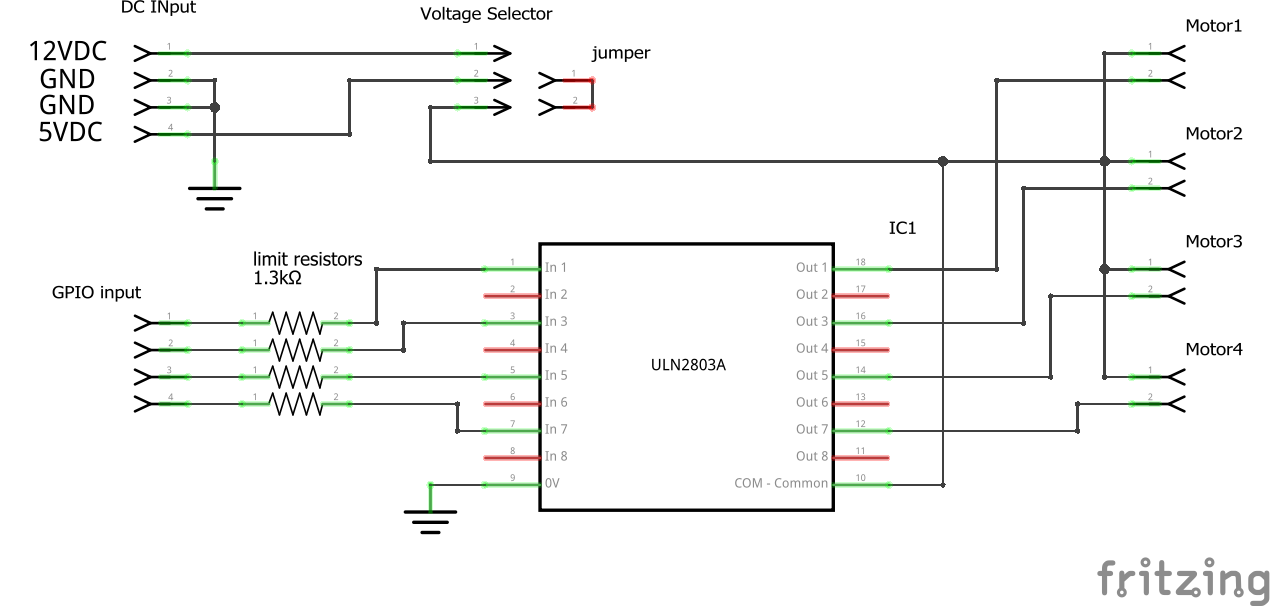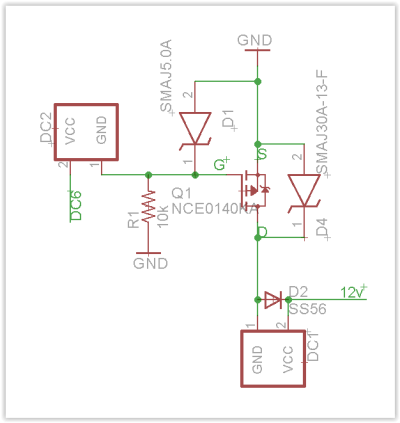I want to build a DIY Doser, similarly to the Adafruit Guide. Sadly I couldn't find L293 ICs, so I decided to run with standard monodirectional bipolar transistors (ULN2801 with input resistors).
The current plan and circuit diagram can be found on my project's GitHub page.
A few quirks:
I remember @robsworld78 mentioning something like this in one of his great videos here.
The current plan and circuit diagram can be found on my project's GitHub page.
A few quirks:
- I'm concerned about the PCA9685's reliability over I2C, I therefore want to run the pumps on the PI's GPIOs
- My Pumpsrun nominally on 12V, 200-300mA and 100ml/min, e.g. 0.6s / ml
- I'm concerned that this is way to fast for typical daily dosing of trace elements
- I therefore have several methods, as far as I can see
- dose less often with a then higher amount
- dose more often, but with diluted fluid (as @Ranjib)
- decrease the pumps' speed
- I'm currently favoring to decrease the pump speed
- I could do this via PWM
- uses more parts and makes the circuit more complicated
- I could simply run the pumps with 5V instead of the nominal 12V
- If the resistance stays the same (which it probably won't) I decrease the electrical power by ( 5v/12V )^2 which is about 1/100
- that means I would instead of dosing 1ml every 0.6 seconds, dose 1ml every 6-60 seconds, depending on how the pump reacts
- I could do this via PWM
I remember @robsworld78 mentioning something like this in one of his great videos here.
Last edited:




















